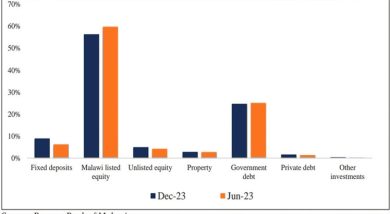Borderless tourism market to benefit Malawi
 Malawi is expected to reap benefits from the borderless tourism market being planned in the 19-member Common Market for Eastern and Southern Africa (Comesa) bloc, Nastion Online has learnt.
Malawi is expected to reap benefits from the borderless tourism market being planned in the 19-member Common Market for Eastern and Southern Africa (Comesa) bloc, Nastion Online has learnt.
Comesa touts the borderless tourism market that will culminate into the development of a common selling point for regional tourism market, as an initiative to build a sustainable tourism industry in the trade bloc.
Tourism officials from the bloc meeting in Nairobi, Kenya, this week are expected to launch the first steps towards creating a borderless tourism market.
The officials are expected to brainstorm on coming up with innovative and cheaper tourism products to promote domestic tourism and coming up with modalities of improving the regional tourism image at the international arena.
“The tourism offerings within Comesa are unique and diverse offering a huge tourism potential that we should exploit. As we do other things, we should also come up with modalities of correcting the bad image perception on the region created by the international media,” one official in the bloc was quoted by the Trade and Law Centre (Tralac), a non-profit organisation focussing on effective participation by individual southern African countries and Sadc in the global economy.
Borderless tourism
Malawi’s Ministry of Industry and Trade spokesperson Wiskes Nkombezi on Wednesday said he needed time to understand the concept of borderless tourism before commenting.
Officials from the Ministry of Tourism, Parks and Wildlife were not available for comment, but sources say some officials in the ministry are attending the meeting in Kenya.
Malawi’s tourism sector, despite having potential, has been growing at a snail’s pace and contributes less than 10 percent to the gross domestic product (GDP).
Experts argue that tourism could be one of the sectors that could help the economy generate foreign exchange to supplement what comes from tobacco, the principal export crop wiring in about 60 percent of export earnings.
But Tralac said a borderless tourism market is part of integration efforts currently being undertaken within the regional trade bloc, an already free trade area that is set to link up with the Southern Africa Development Community (Sadc) and the East Africa Community (EAC) by mid-2014 to create Africa’s largest free trade area.
The officials banging heads in Kenya are expected to come up with a common strategy for launching a borderless tourism market.
New tourism markets
Some of the issues that came up for discussion on the first day of the conference include the proposal to review air travel costs within the region and increase of air traffic within major cities as lack of that currently makes it expensive to travel by air.
For example, flying from Kenyan capital Nairobi to Burundian capital Bujumbura, both countries in East Africa, costs an estimated $725 dollars by air, nearly the same cost of travelling from Nairobi to London and back.
The delegates also agreed there is need for respective tourism markets to give focus to cultural preservation to ensure sustainability of tourism markets and as part of diversifying tourism markets available in the region.
They noted that while a country such as Tanzania is stronger on game and beach tourism, Swaziland, on the other hand, is stronger in cultural tourism and, therefore, complements the regional tourism offerings.
Creating a borderless market is also the best way of encouraging domestic tourism to balance with the current over dependence on tourists from Western countries, according to Tralac.
Africa receives 4.8 percent of all tourist arrivals in the world, according to the World Tourism Organisation.





